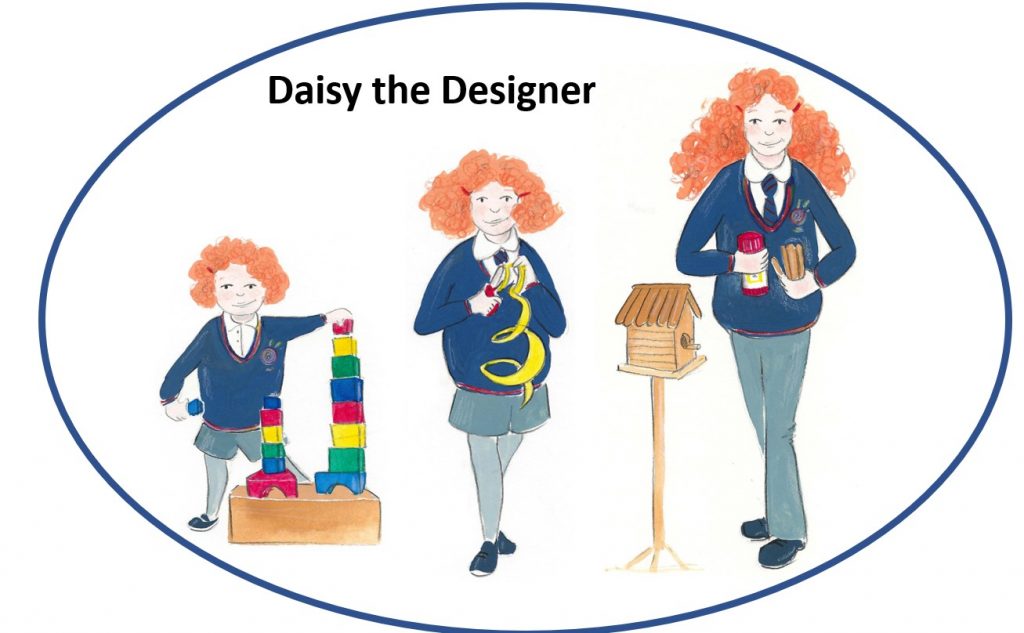
Intent: This is what we want for our chilldren
At Barley Fields Primary, we aim for our children to be the next generation of engineers, world-class chefs, designers and architects. Our Design Technology curriculum provides our children with the opportunity to take risks, experience failure and develop the personal attributes needed to thrive in an ever-changing, technological world. We believe that Design Technology is the future and that is why we offer our children such a practical, inspiring and exciting curriculum linked to real life contexts and problems when possible.
Through delivery of our progressive Design Technology projects, we aim for our children to understand and experience the processes of designing, making and evaluating, ensuring that they are given the opportunity to become independent and creative thinkers. Our curriculum is designed to provide the children with a strong sense of pride and achievement in their own creations and to apply skills of determination, resilience and critical thinking in a range of contexts.
Implementation: This is what it will look like in the classroom
Our children follow a carefully structured Design and Technology curriculum designed to progressively enhance their understanding and develop their skills. Our Design Technology curriculum promotes independence, resilience and problem solving from the very beginning of our children’s learning journey. Lessons are vibrant and fun, filled with challenge, success and failure!
Our approach to Design technology begins in Early Years when children have opportunities to explore using a variety of tools and join a variety of materials in different ways. In Key Stages One and Two, the children build on their skills through progressive projects that are taught in blocks of learning. This allows sustained teaching time for the children to engage in a project from start to finish, to be critical, inventive and reflective in their work as well as develop and embed practical skills.
Our Design Technology curriculum follows a sequence that progressively builds on and revisits four strandsand children will typically engage in activities including:
- Exploring products and developing ideas
- Developing of skills
- Designing and Making tasks
- Product evaluation and review
The strands are explored through the technical elements of the curriculum: textiles, mechanisms, structures, electrical systems and food and nutrition. The nature of our spiral curriculum allows the children to revisit these elements in each key stage; consolidating and building upon prior learning. This ensures the children know more and remember more as they progress through our school.
Design Technology is taught in blocks of lessons to ensure children have opportunities for sustained periods of study and have time to embed and enhance their knowledge and skills. Our detailed schemes of learning underpin an appropriate teaching pedagogy for effective quality first teaching and support staff in their delivery of the curriculum. Staff have access to targeted CPD opportunities to develop their pedological understanding when necessary. The school has a wealth of high-quality resources for children to use in their learning.
We are proud to have a Design Technology curriculum informed by research which undergoes regular reviews and updates to ensure its relevance and effectiveness.
Our children will know and understand the core skills needed to become a successful designer with the use of the school curriculum character – Daisy the Designer. The character is referenced in each lesson so that the children are familiar with the carefully crafted end points of our Design Technology curriculum in each key stage.

Full details of our curriculum long term schemes of learning and curriculum pathways can be downloaded below.
Impact: This is what it will mean for our children
The impact of our Design & Technology curriculum is that our children will be able to progressively design, make and evaluate a range of products, for a variety of users and for many different purposes.
Our DT curriculum and our teaching and learning pedagogy leads to children who:
- have a positive view of taking risks and making independent choices in a classroom
- carry out research, show initiative and ask questions to develop a detailed knowledge of how things work and are assembled
- enjoy being creative and be proud of their achievements in each project.
- have the ability to act as designers and makers, working efficiently, using materials carefully and working safely.
- have a knowledge of which tools, equipment and materials to use to make their products.
- Have the ability to apply mathematical and scientific knowledge and skills accurately when designing and making.
- Have an ability to manage risks exceptionally well to manufacture products safely and hygienically.
- Develop a passion for the subject and a desire to explore their learning further in the future.
We are proud of our children’s achievement in DT. We continually observe and formative assess children against curriculum end points using SONAR and use this information to plan next steps in their learning and to challenge and consolidate their skills. By the end of each year, children are expected to know, apply and understand the vocabulary and grammar specified in the science curriculum plans.
In addition, we measure the impact of our curriculum through the following methods:
- A celebration of learning which demonstrates progression across the school (Curriculum Floor book);
- Pupil discussions about their learning (Pupil Voice);
- Internal monitoring strategies by SLT and the DT Team
As they leave our school children should understand that the skills they learn in DT will help them now and in the future of an ever-changing, technological world. Our children will leave Barley Fields feeling inspired to pursue their own creative thought, make and follow their own decisions and become the next generation of workers within the STEM world.
